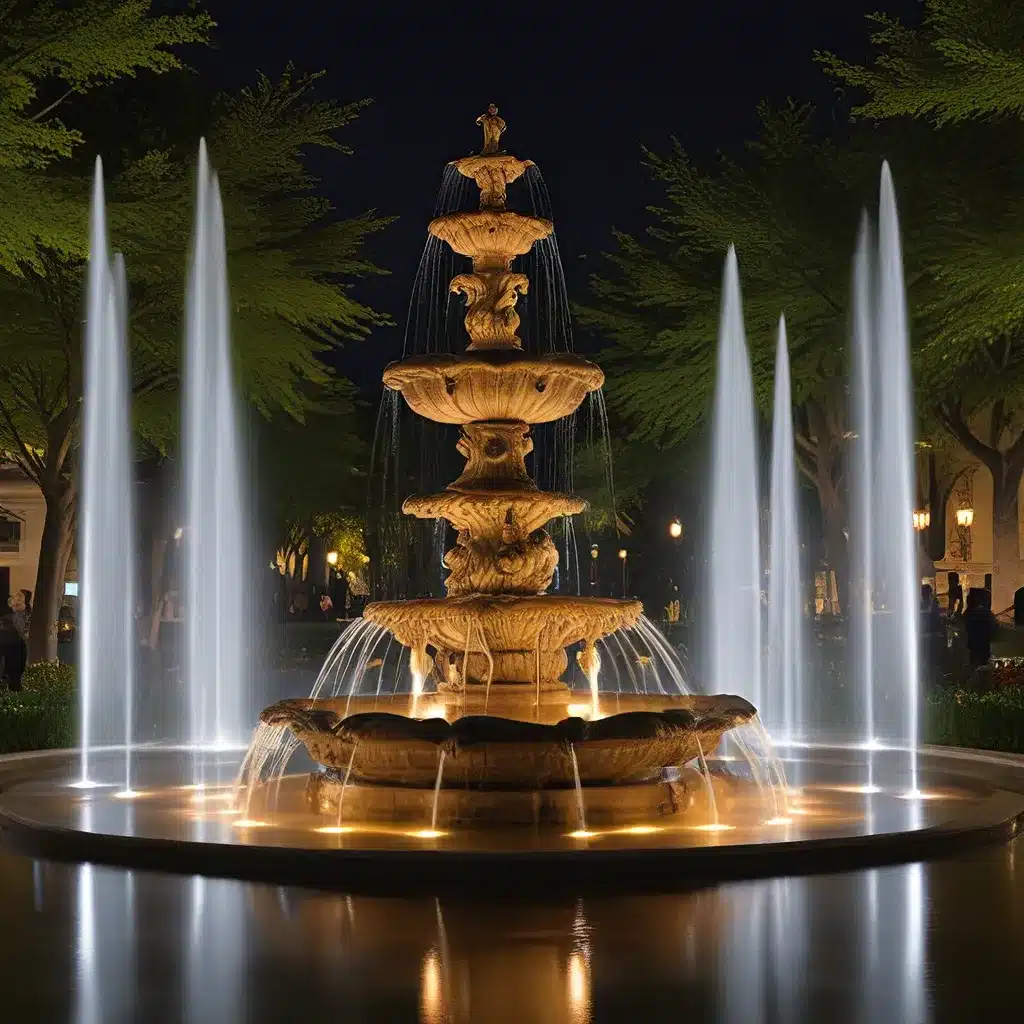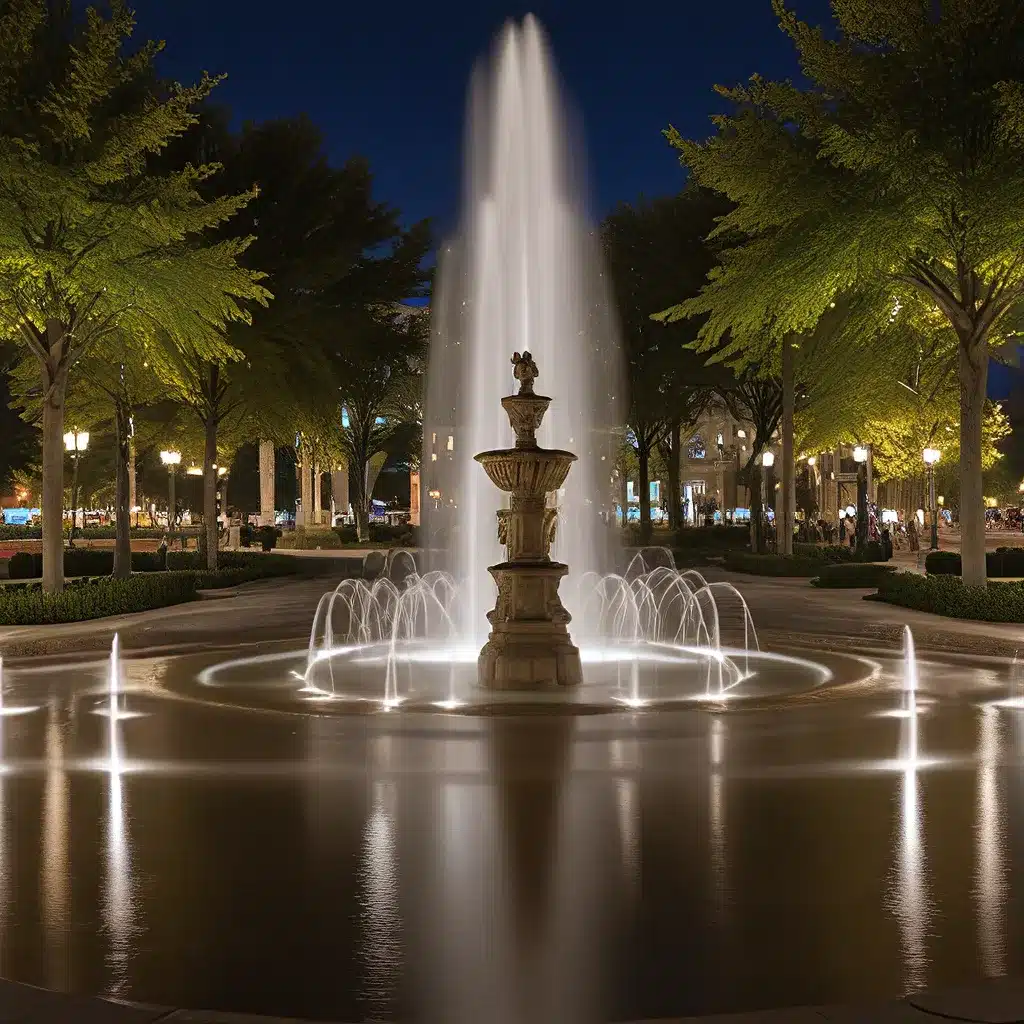
Fountain Design Essentials – Welcome to Fountain Lights
Fountain Design Essentials – Welcome to Fountain Lights

As I delve into the captivating world of fountain hydraulics, I can’t help but be amazed by the intricate blend of engineering, physics, and aesthetics that brings these mesmerizing water displays to life. It’s a realm where the practical applications of fluids in motion converge with the pursuit of visual splendor, resulting in awe-inspiring fountains that capture the hearts and imaginations of audiences worldwide.
Fountain hydraulics is a fascinating field that combines the fundamental principles of hydrostatics (the study of fluids at rest) and hydrodynamics (the study of fluids in motion). At its core, it deals with the precise manipulation of one of nature’s most versatile elements – water – to create visually stunning and technically proficient water displays. It’s a testament to human ingenuity, where we’ve harnessed the power of fluid dynamics to transform the simple flow of water into a captivating, choreographed performance.
The two primary forces that govern fountain hydraulics are gravity and pressure. Gravity, that ever-present force that pulls water downward, creates the initial flow, while pressure, applied through the use of pumps, propels the water upwards or guides it through various pathways. Understanding the delicate balance between these two forces is crucial in designing a fountain that not only functions reliably but also achieves the desired visual effect.
Pumps, the heart of a fountain’s hydraulic system, play a pivotal role in moving the water. From submersible pumps that are ideal for smaller fountains, to the more powerful external pumps suited for large-scale displays, the choice of pump depends on factors like the fountain’s size, the height of water projection needed, and the complexity of the water patterns.
Once the water is set in motion, it’s the intricate network of pipes and channels that transport it from the source to the fountain’s display elements. The material and design of these components are critical for ensuring efficient water flow and longevity. From the versatile PVC and plastic used in smaller, simpler designs to the more durable copper and stainless steel employed in larger, more elaborate fountains, the selection of materials is a carefully considered decision.
The diameter and length of the pipes also have a profound impact on the water pressure and flow rate – key factors in achieving the desired visual effects. By meticulously controlling these variables, fountain designers can create a wide range of captivating water displays, from gentle sprays to powerful jets.
The final elements where water exits the fountain system are the nozzles and jets, and they play a vital role in shaping the water display. Different nozzle types can create a diverse range of effects, from a soft, gentle spray to a dramatic, high-pressure jet. The design and positioning of these nozzles are central to the aesthetic appeal of the fountain, allowing for the creation of intricate patterns and mesmerizing designs.
Understanding the dynamics of water flow is crucial in fountain design. Laminar flow, characterized by smooth, orderly water movement, creates sleek, glass-like streams, while turbulent flow, with its chaotic and irregular movement, is used to generate lively, splashy effects. By manipulating these flow types, designers can craft a wide range of visual experiences, from serene and elegant to dynamic and captivating.
The velocity and pressure of water in a fountain must be carefully controlled to achieve specific effects. High-pressure systems can propel water to impressive heights, while lower pressure creates gentler, more cascading flows. Velocity is adjusted through pump power and pipe sizing, allowing for precise control over the fountain’s dynamics.
Fundamental principles like Bernoulli’s Principle and Pascal’s Law are essential in understanding how fountains work. Bernoulli’s Principle explains the relationship between velocity and pressure within a moving fluid, while Pascal’s Law underpins the operation of hydraulic systems in fountains.
One of the primary challenges in fountain hydraulics is balancing aesthetic goals with engineering realities. Designers must consider factors such as water distribution, wind interference, and maintenance needs, all while creating visually appealing and emotionally resonant displays. It’s a delicate dance, where technical expertise and creative vision must work in harmony to bring these water features to life.
Sustainability has become a crucial aspect of modern fountain design. Innovations in hydraulic technology focus on water conservation, energy-efficient pumps, and environmentally friendly materials. Recirculating water systems are now standard in fountain design, minimizing water waste and loss, while the incorporation of renewable energy sources to power the hydraulic systems further enhances the eco-friendly credentials of these water features.
As we look to the future, the evolution of fountain hydraulics reflects both technological advancements and changing aesthetic tastes. The integration of smart technologies and automation will play a significant role, with the use of sensors and computer-controlled systems optimizing water usage and choreography.
The continuous innovation in hydraulic systems and materials will undoubtedly lead to even more spectacular and environmentally friendly water displays in the years to come. From historical masterpieces like the Trevi Fountain to modern wonders like the Bellagio Fountains and the Dubai Fountains, the evolution of this field reflects the human ingenuity and the relentless pursuit of creating awe-inspiring water displays that captivate audiences worldwide.
As you explore the world of fountain lighting and water features, I encourage you to delve deeper into the fascinating realm of fountain hydraulics. Discover the intricate interplay of science, engineering, and art that gives life to these mesmerizing water displays, and uncover the endless possibilities that lie ahead as we continue to push the boundaries of what’s possible with this captivating medium.
Share to :
Subscribe to our newsletter for the latest in fountain design, innovative lighting ideas, and exclusive tips straight to your inbox. Join the community shaping the future of water features.

Rapid delivery to your doorstep.

Excellence in every product.

Great value for your investment.

Assistance at any hour.
Fountain Lights — Illuminating creativity in every splash!
Copyright © 2023. All Right Reserved